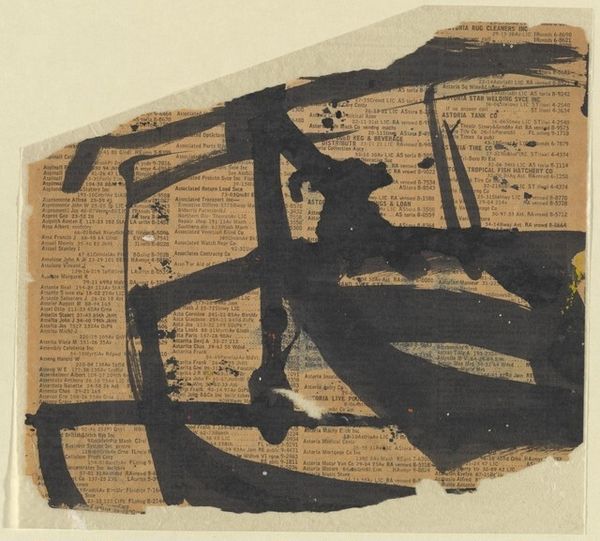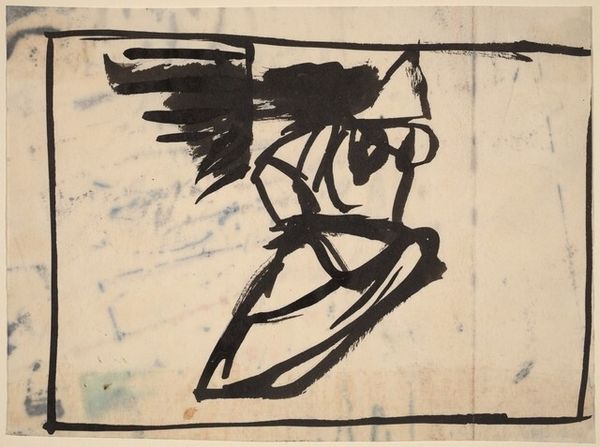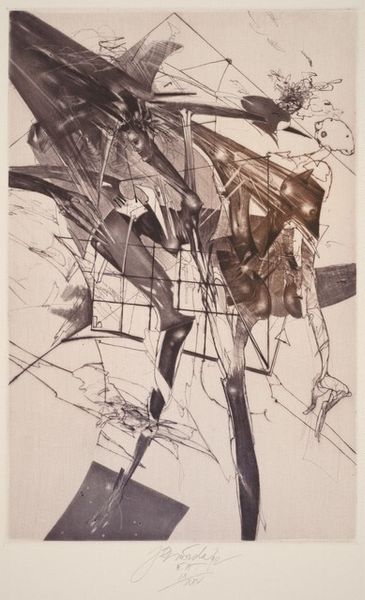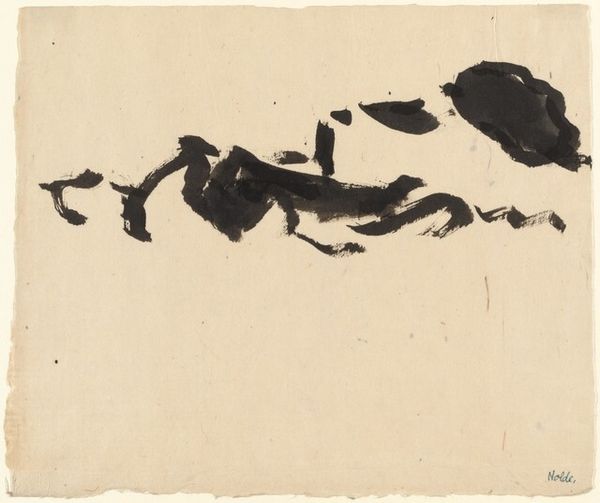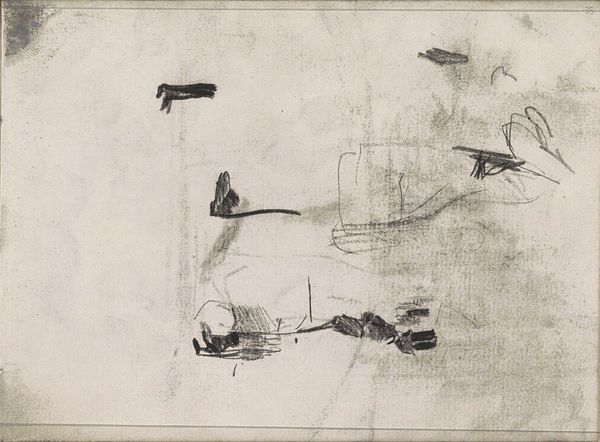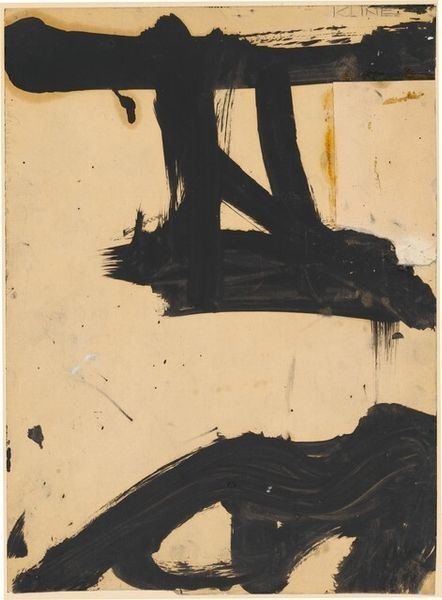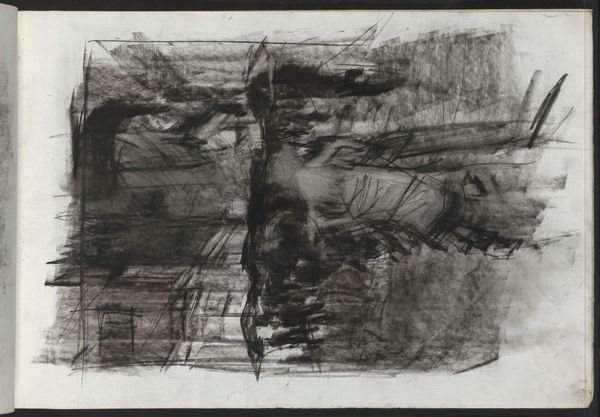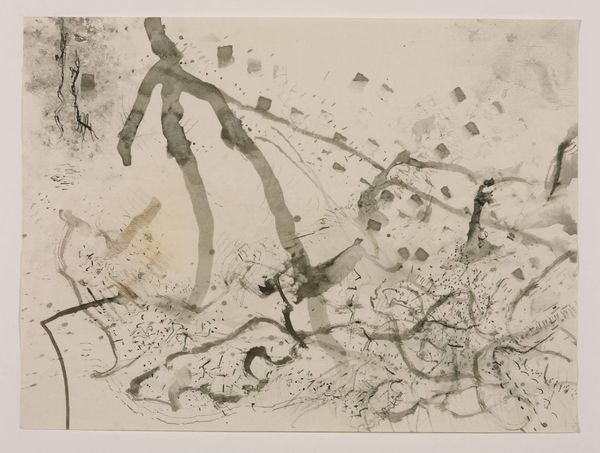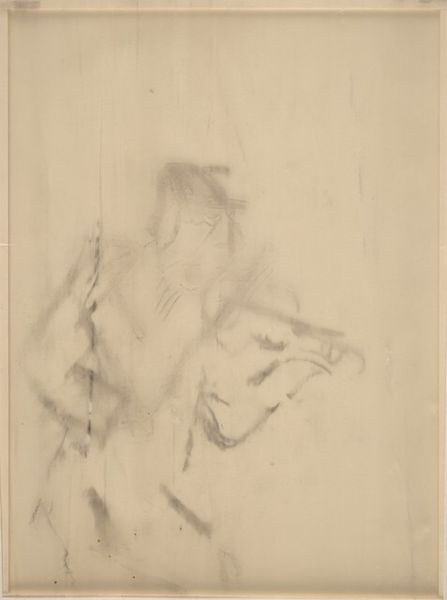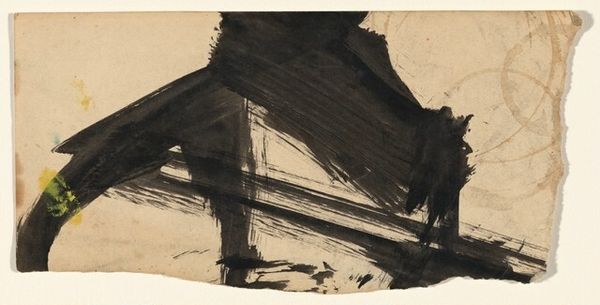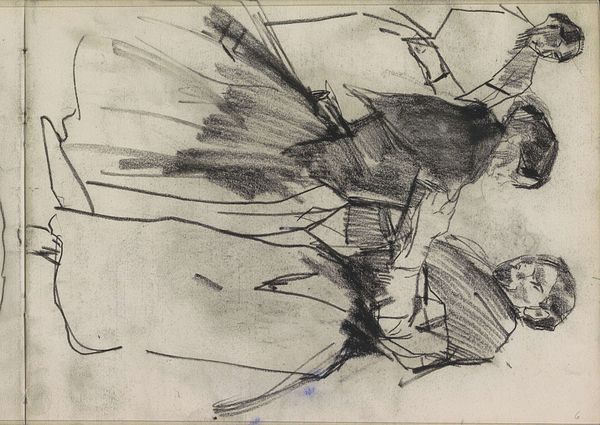
drawing, paper, ink, graphite
#
abstract-expressionism
#
drawing
#
paper
#
form
#
ink
#
abstraction
#
line
#
graphite
#
watercolor
Dimensions: overall: 58.8 x 67.5 cm (23 1/8 x 26 9/16 in.)
Copyright: National Gallery of Art: CC0 1.0
Editor: Here we have Franz Kline's "Untitled" drawing, likely from the 1950s. It's ink and graphite on paper, mostly blacks and whites, but there are a few warmer tones near the bottom. The large, bold brushstrokes give it a sense of immediacy. How do you interpret this work? Curator: This piece resonates deeply with the social and political climate of the 1950s. Abstract Expressionism emerged in the post-war era, a time marked by anxiety and uncertainty in the face of nuclear proliferation and the Cold War. Kline's bold, almost aggressive, strokes can be seen as a rejection of traditional artistic norms, a visual articulation of the angst and alienation felt by many during that time. How does the lack of defined subject matter speak to these ideas? Editor: I hadn’t thought of it that way. I guess the absence of a clear image could represent the uncertainty of the time. Does that tie into how the work confronts viewers with powerful emotions without representing specific things? Curator: Exactly. Moreover, let’s think about Kline’s process and materials. Working primarily with black and white, with stark contrasts, forces the viewer to confront binaries - power structures and inequalities deeply embedded within society. It brings attention to the line itself, asking us to interrogate the very structures upon which our society is built. Are there elements within that feel unfinished to you, which can be read as intentional critiques to authority? Editor: Yes, the unfinished look gives the feeling of constant questioning. Curator: Thinking about Abstract Expressionism as a response to the period helps contextualize the urgency and raw emotion evident in works like this. Editor: That reframes the artwork for me. I was thinking purely in terms of form and visual impact, but I see the piece has social commentary rooted in mid-century anxiety. Curator: It's about understanding how artworks like this operate within complex intersectional narratives, don't you agree? It challenges traditional power structures in art, and forces us to acknowledge the emotions of historical change.
Comments
No comments
Be the first to comment and join the conversation on the ultimate creative platform.
